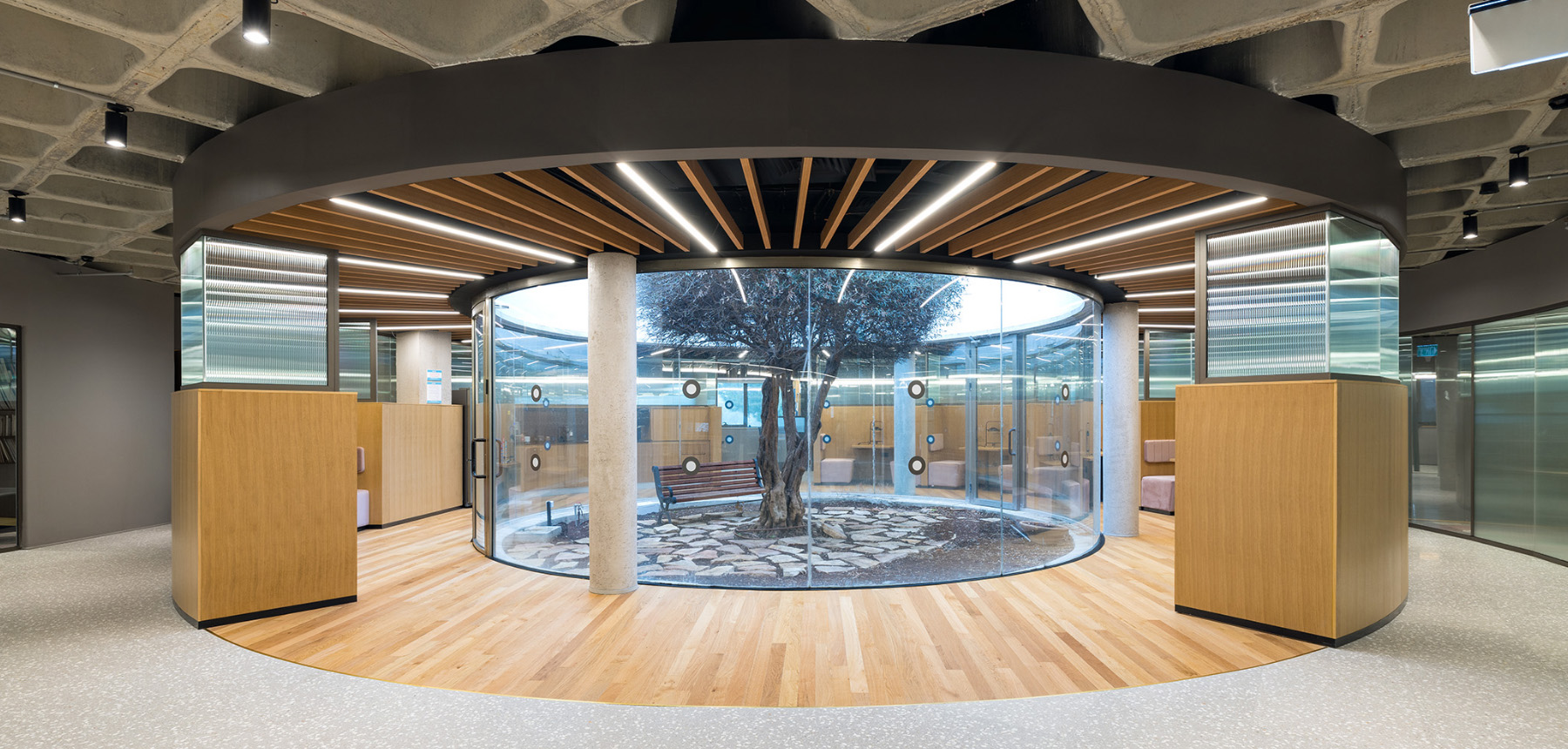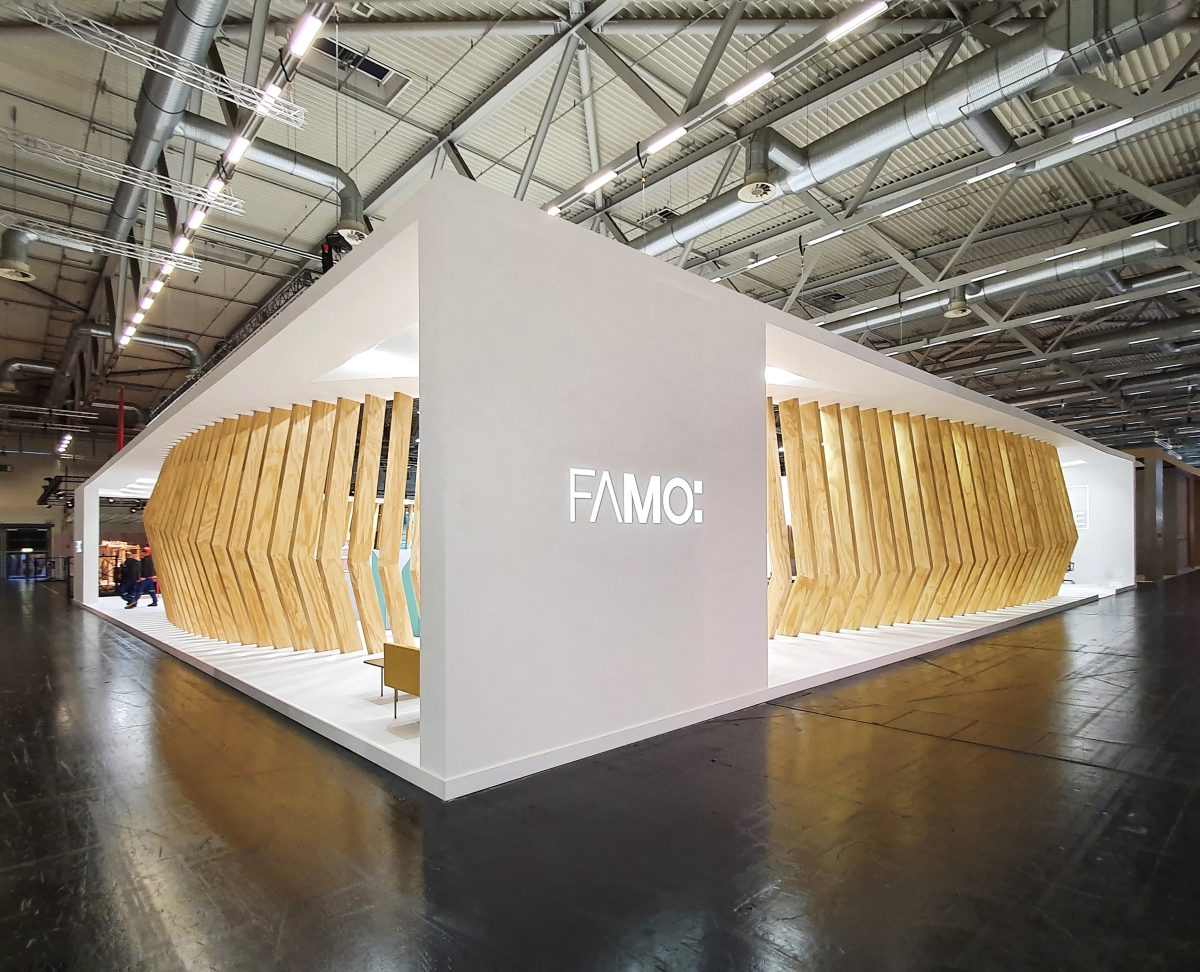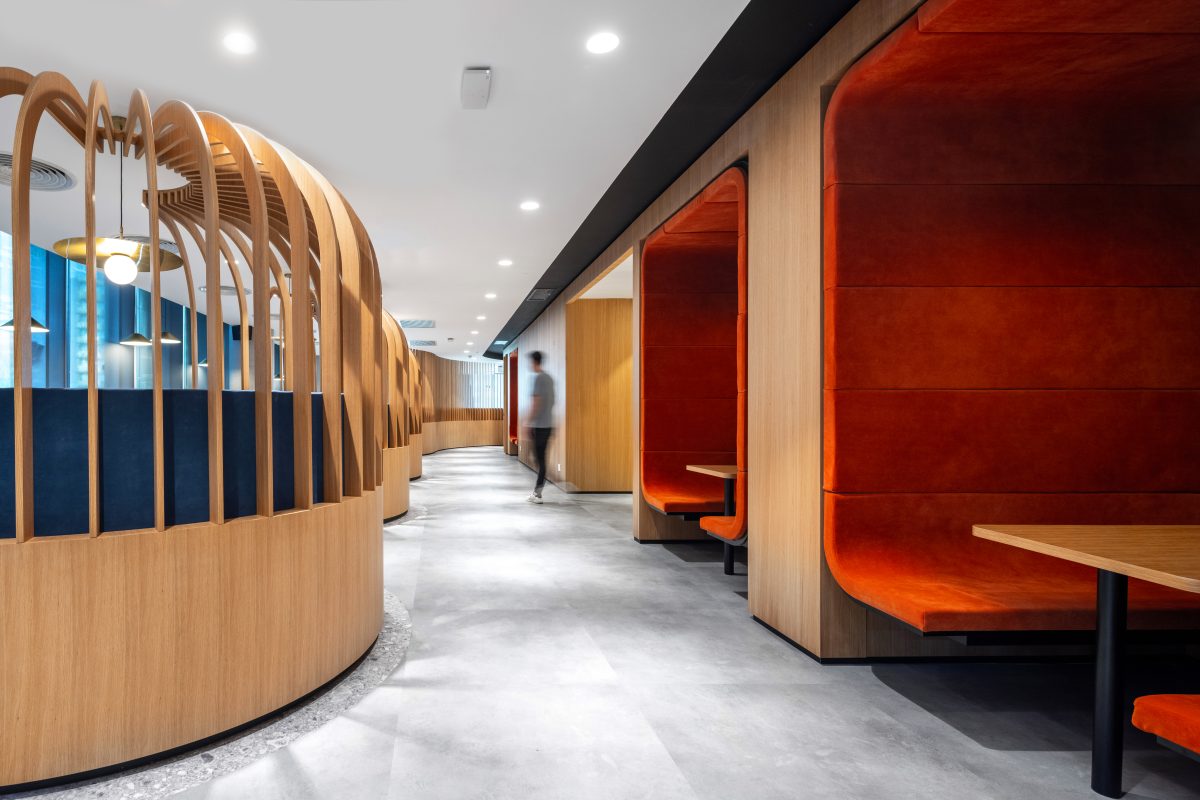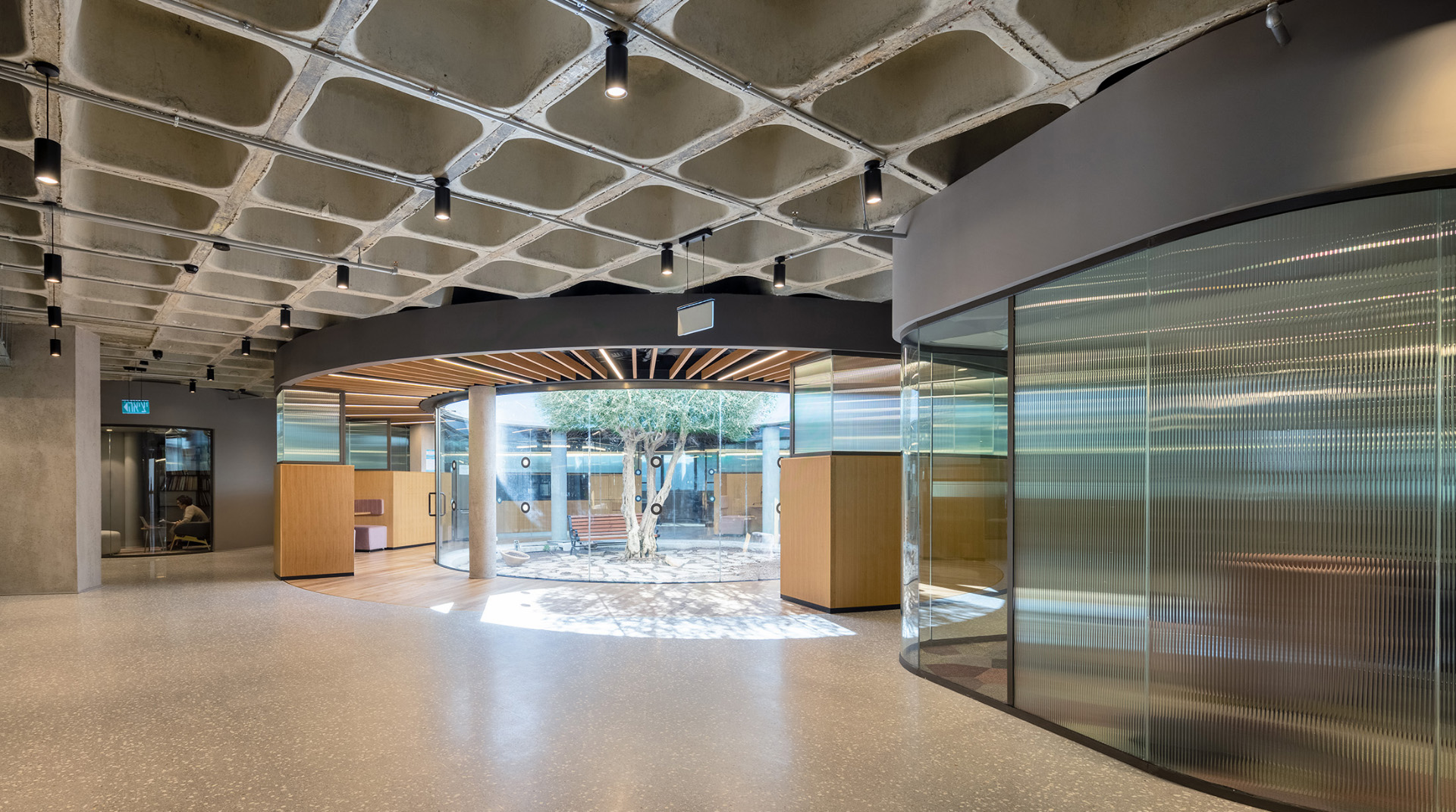
משרדי הג׳וינט
-
לקוח
JDC - ג׳וינט ישראל
-
מיקום
ירושלים
-
סטטוס
- הושלם
-
פרוגרמה
משרדים, מרכז כנסים, מכון מחקר
-
שטח
6,500 מ״ר
-
שירותים
אדריכלות, עיצוב פנים, אפיון סביבת עבודה
-
קטגוריות
- עיצוב פנים
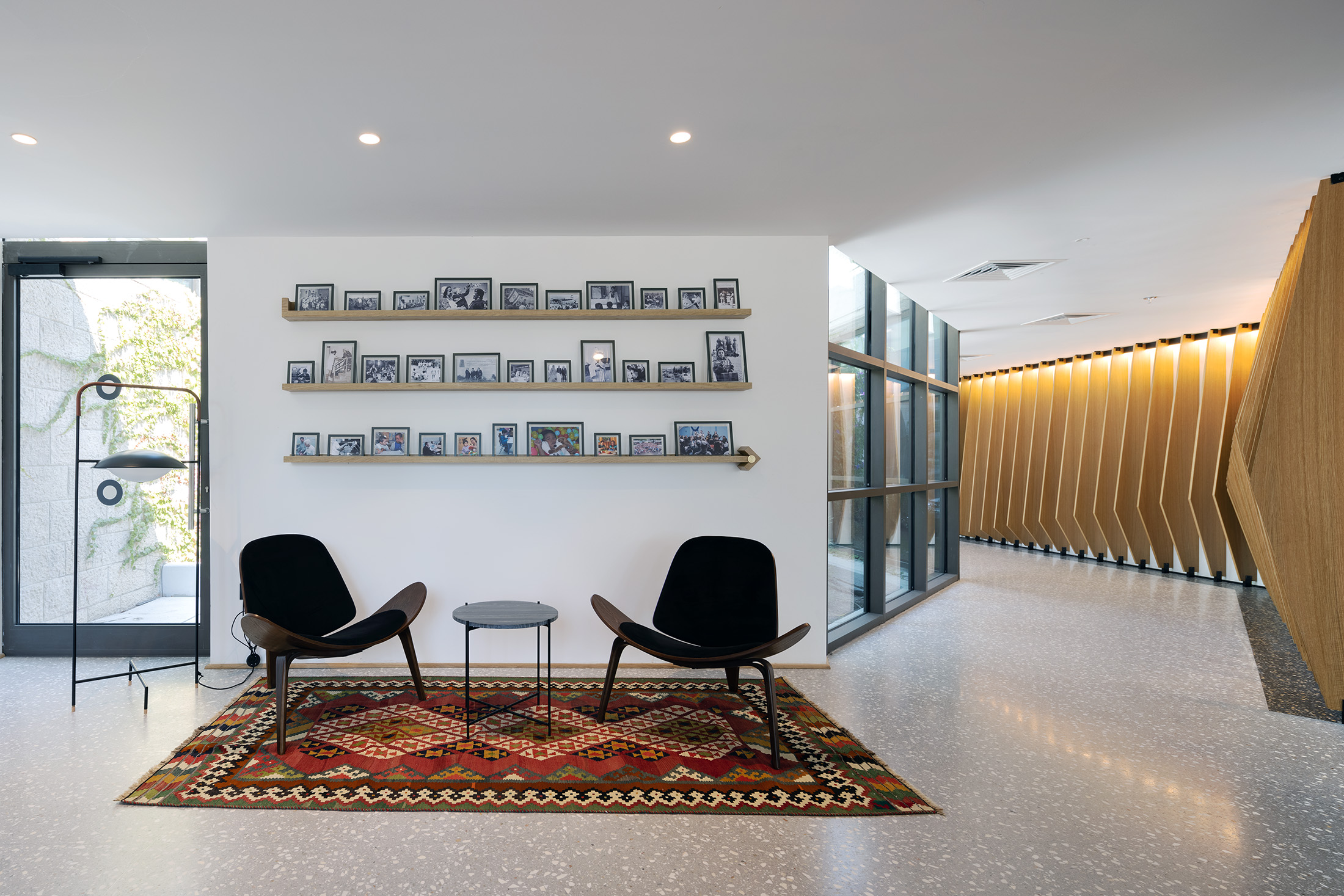
The planning process began by studying and mapping the structure while conducting consultation workshops
The JDC building is located off the campus of the Hebrew University and was subsequently designed by the Rechter office in various periods beginning in 1966. Auerbach Halevy was chosen to redesign the interior spaces of the building that has not been renovated since the original construction of the first wing. The architectural challenge and the complexity of the project stemmed from the desire to respect the character of the original structure and its adaptation to today's work environment and to represent the JDC's vision in Israel. The planning process began by studying and mapping the structure while conducting consultation workshops, including interviews with JDC and management employees. Auerbach Halevy's design vision was to create an inviting, bright and functional work environment. Their main intention was to optimize the workspaces with an emphasis on intuitive orientation between the various intermediate levels. Through separation of private spaces and creation of public spaces around light courtyards scattered in the center of the building, the design brings natural and filtered light into the depths of the building.
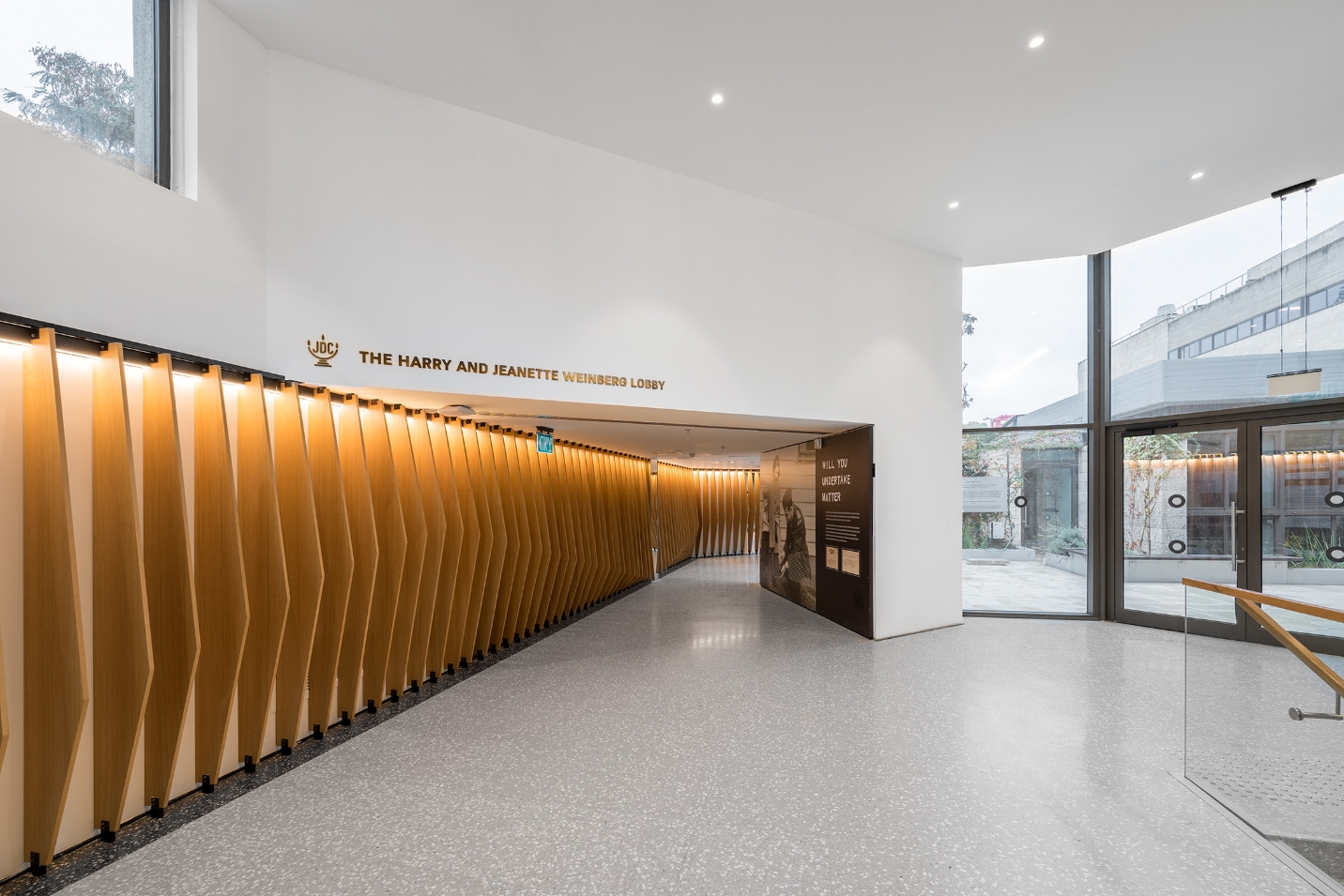
A parametric wooden wall runs through the public corridor on the ground floor to bring movement to the space whilst adding warmth through the natural materiality of stone and concrete
The entrance lobby and gallery were opened and designed to include meeting rooms, and a gallery of historical photos of JDC activities. A parametric wooden wall runs through the public corridor on the ground floor to bring movement to the space whilst adding warmth through the natural materiality of stone and concrete. Departments were designed according to the optimization of needs and types of activities. Between the work areas, public areas have been added that encourage cooperation between the employees and constitute a visual and acoustic buffer.
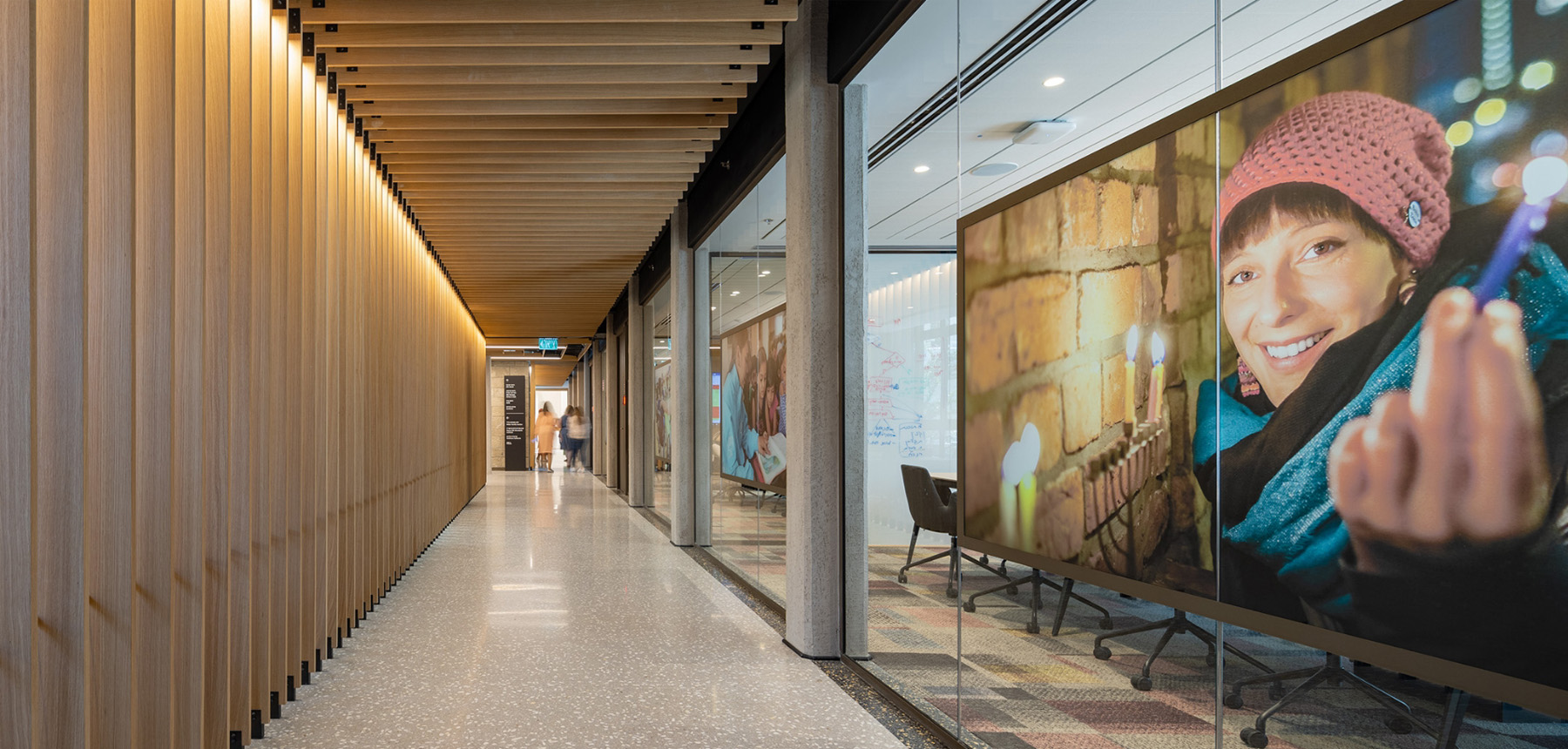
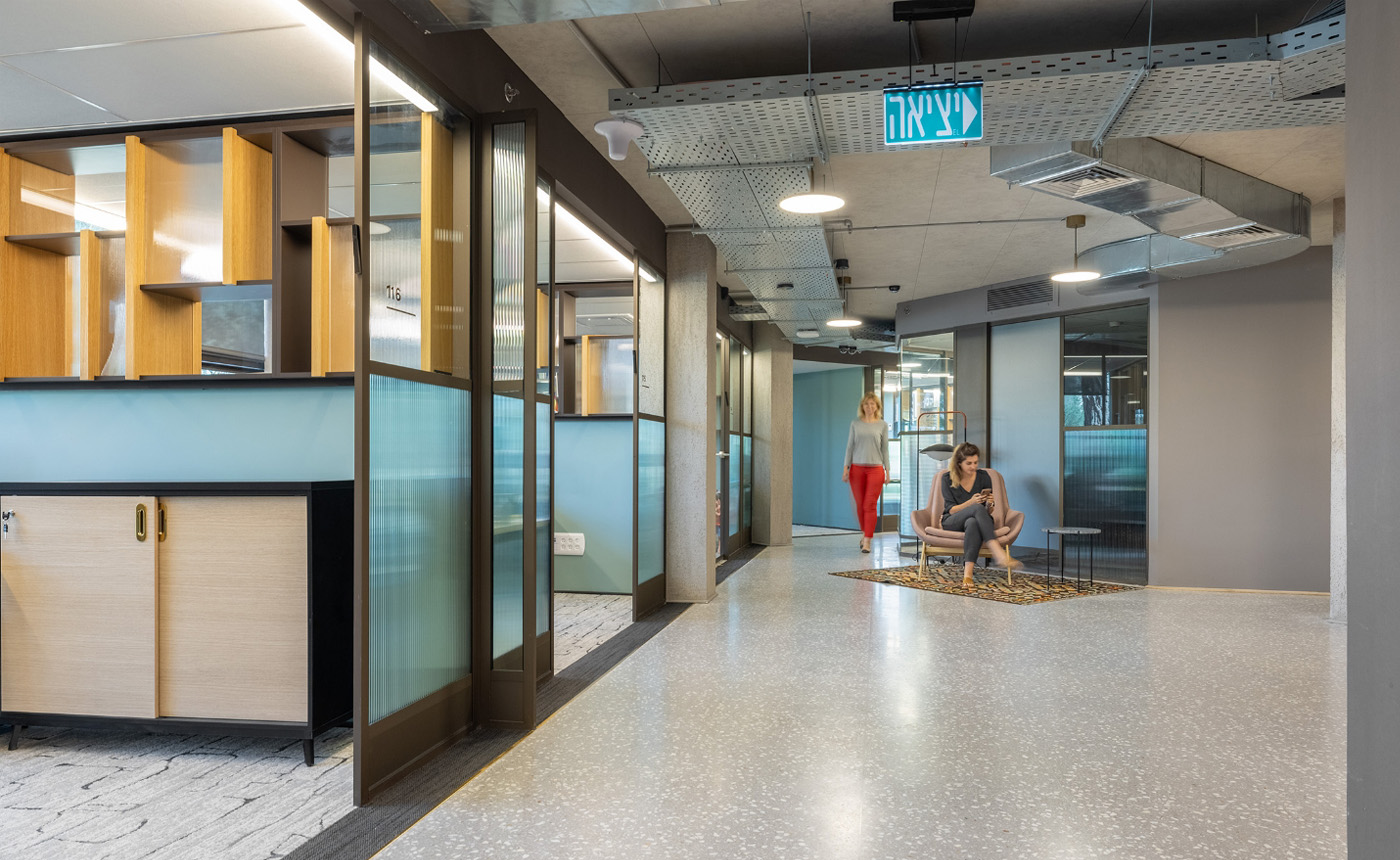
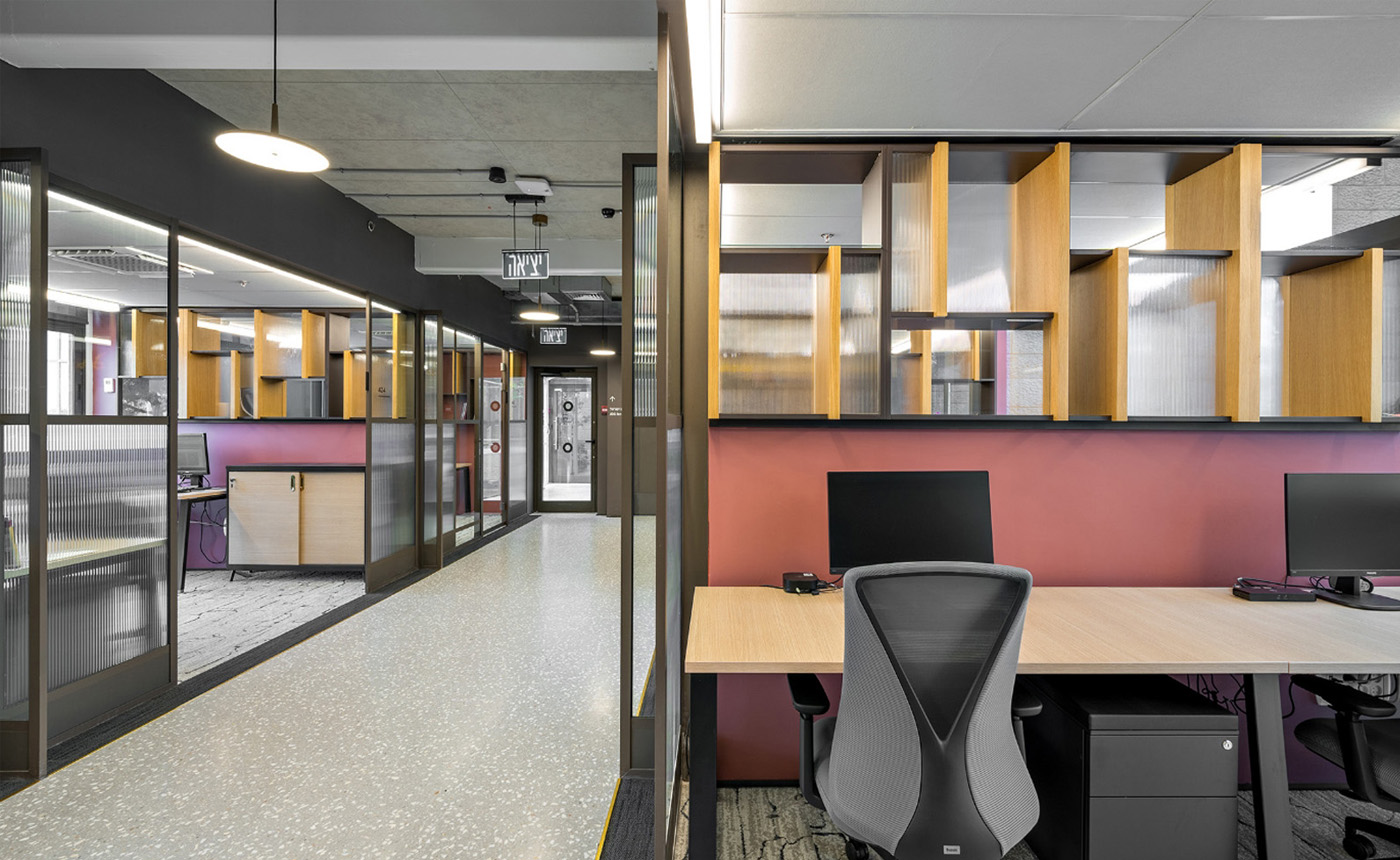
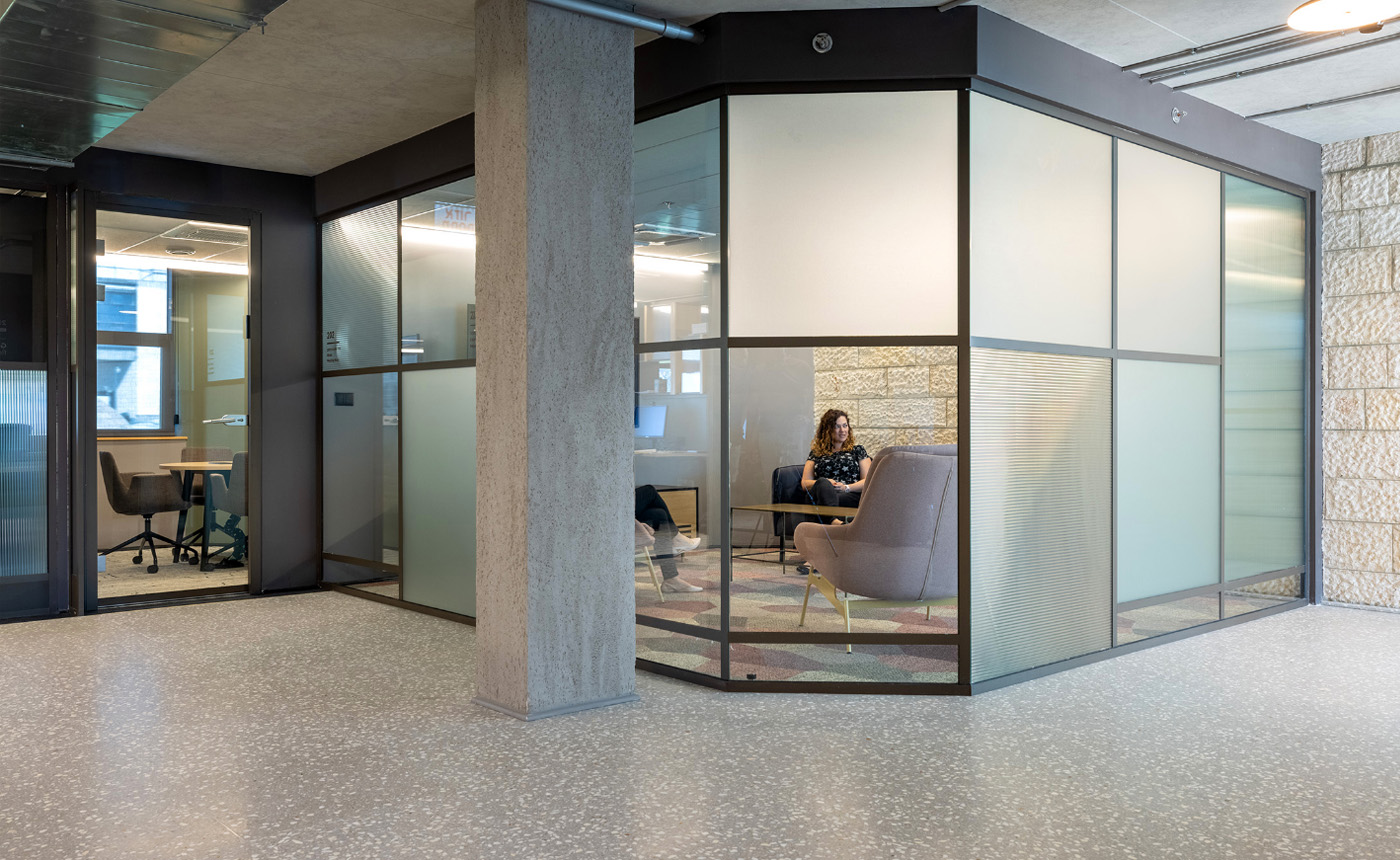
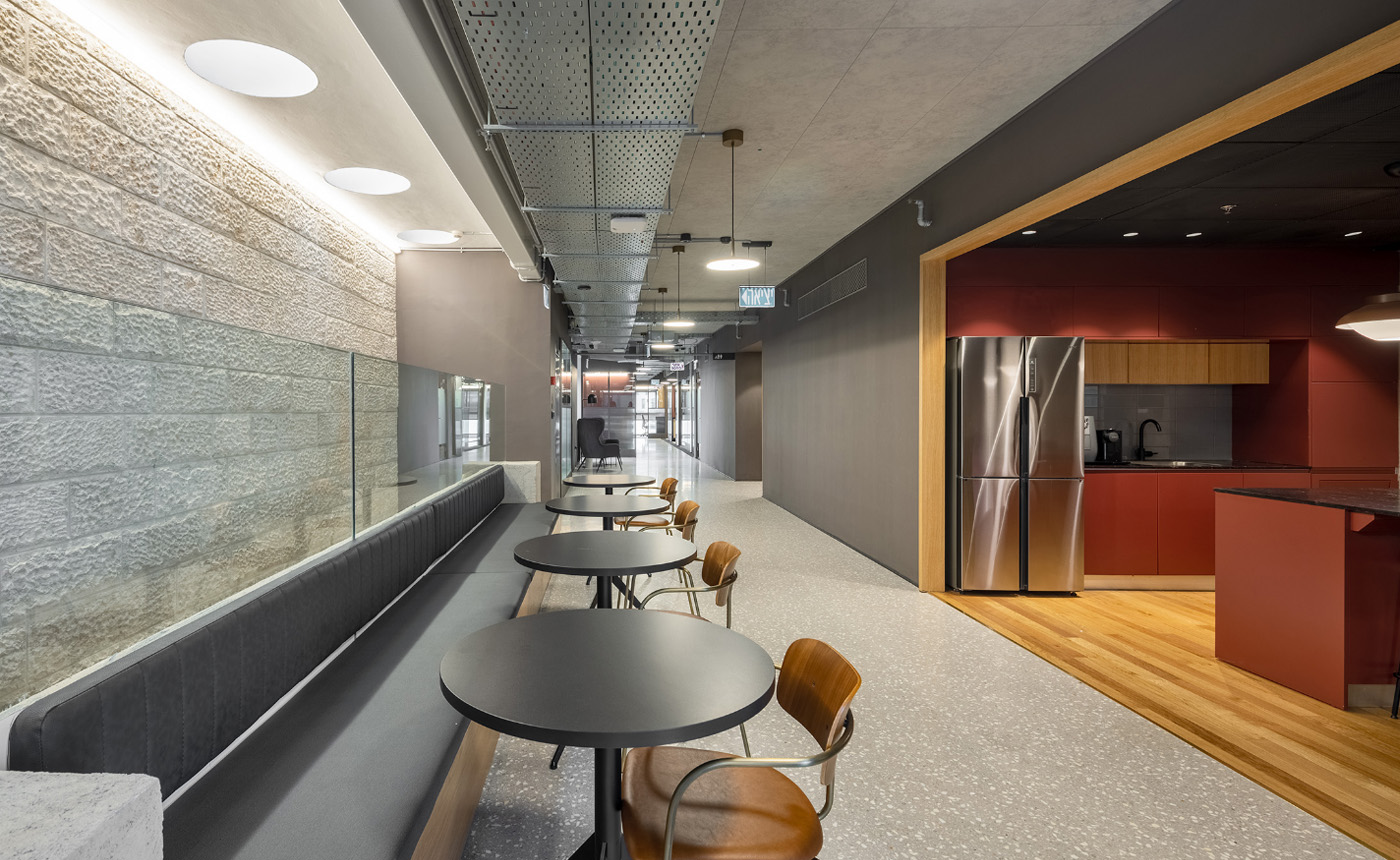
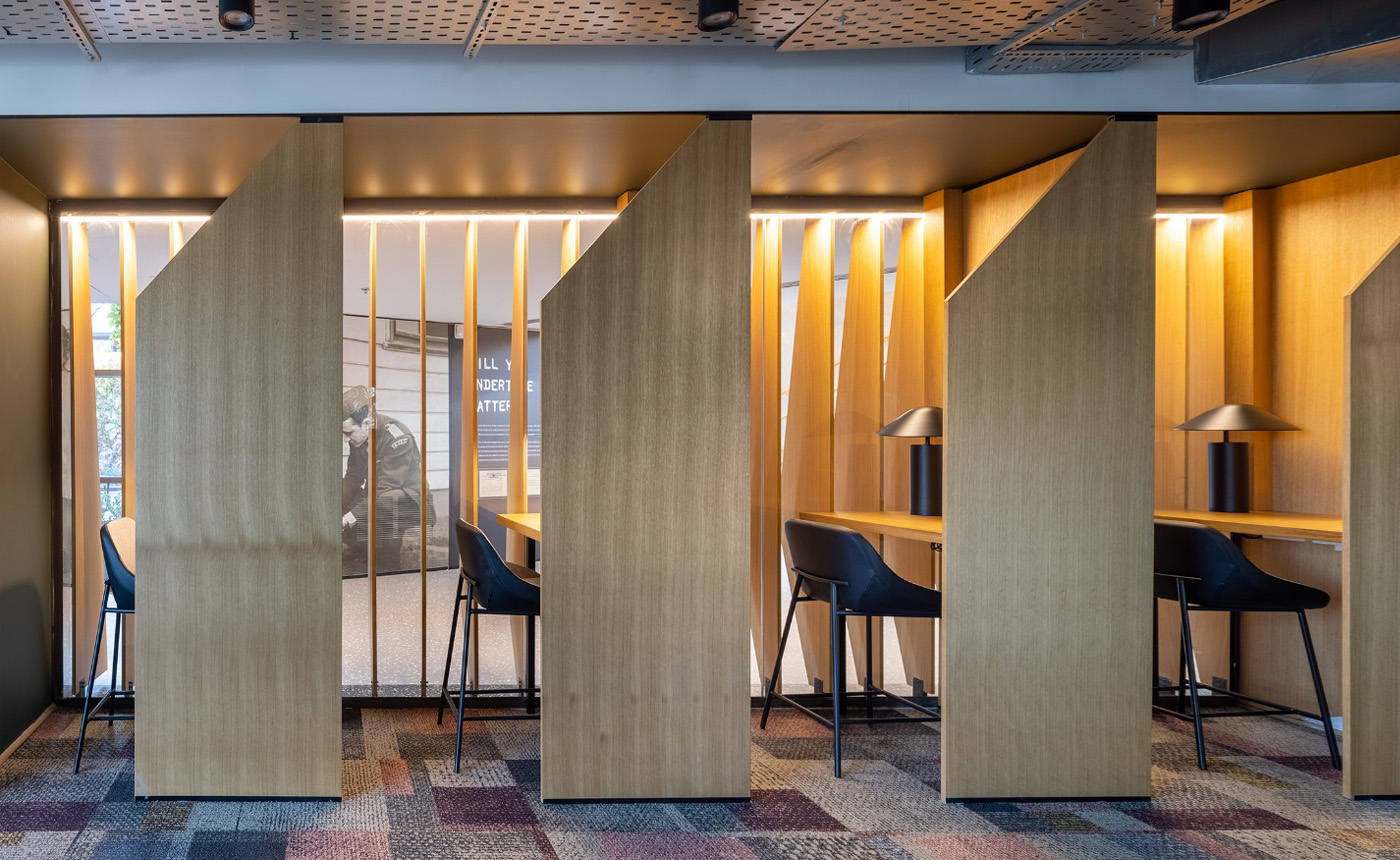
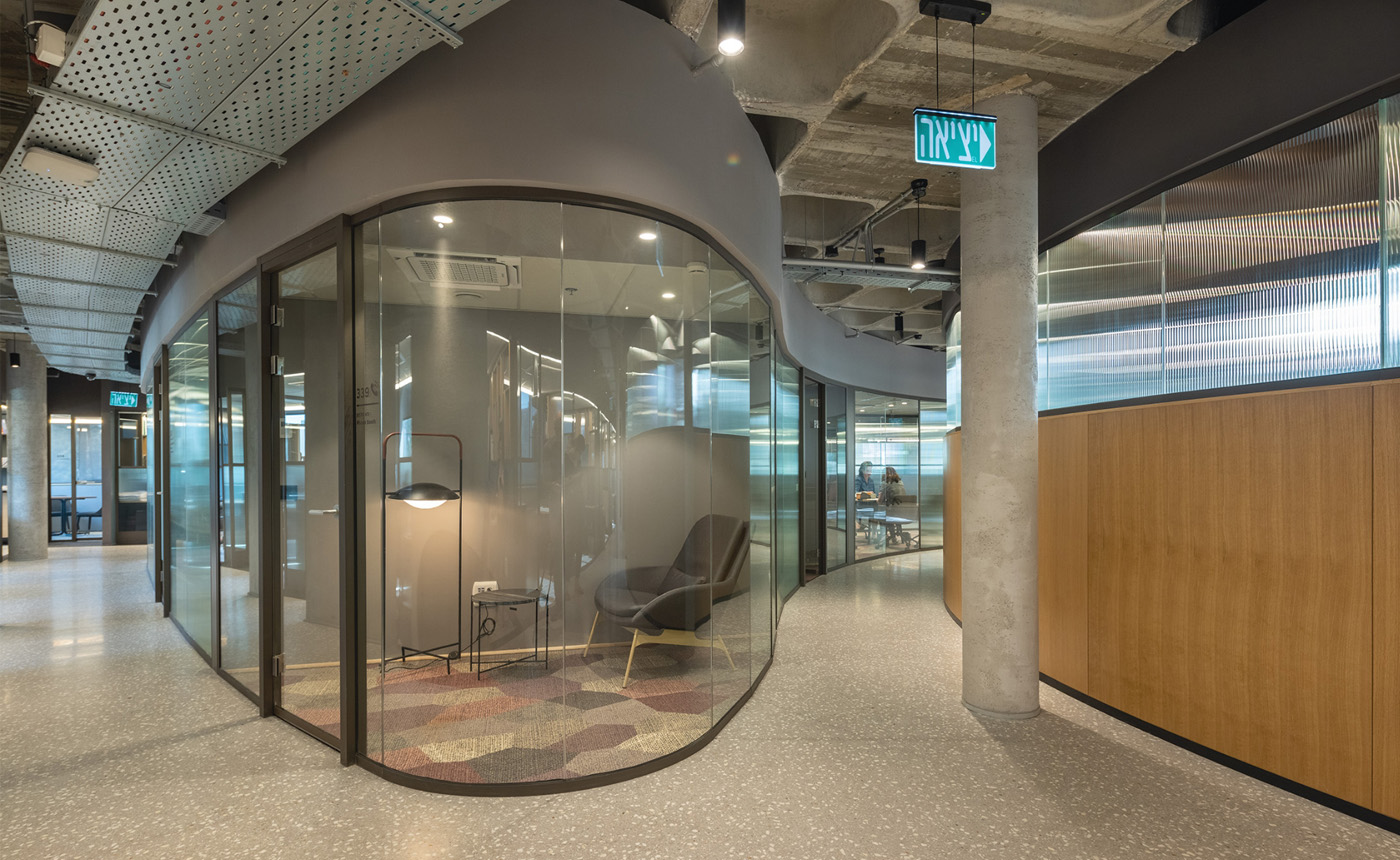
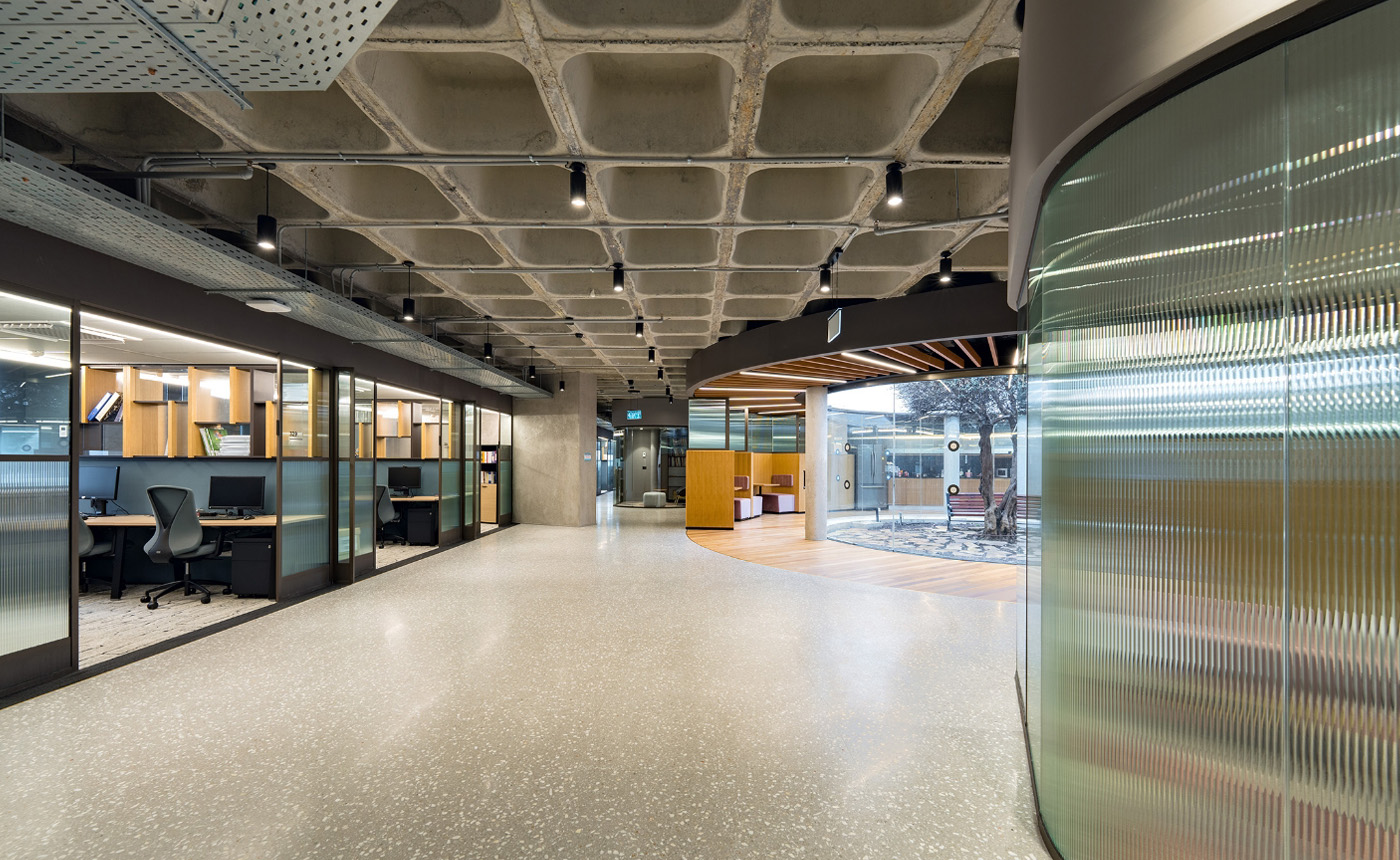
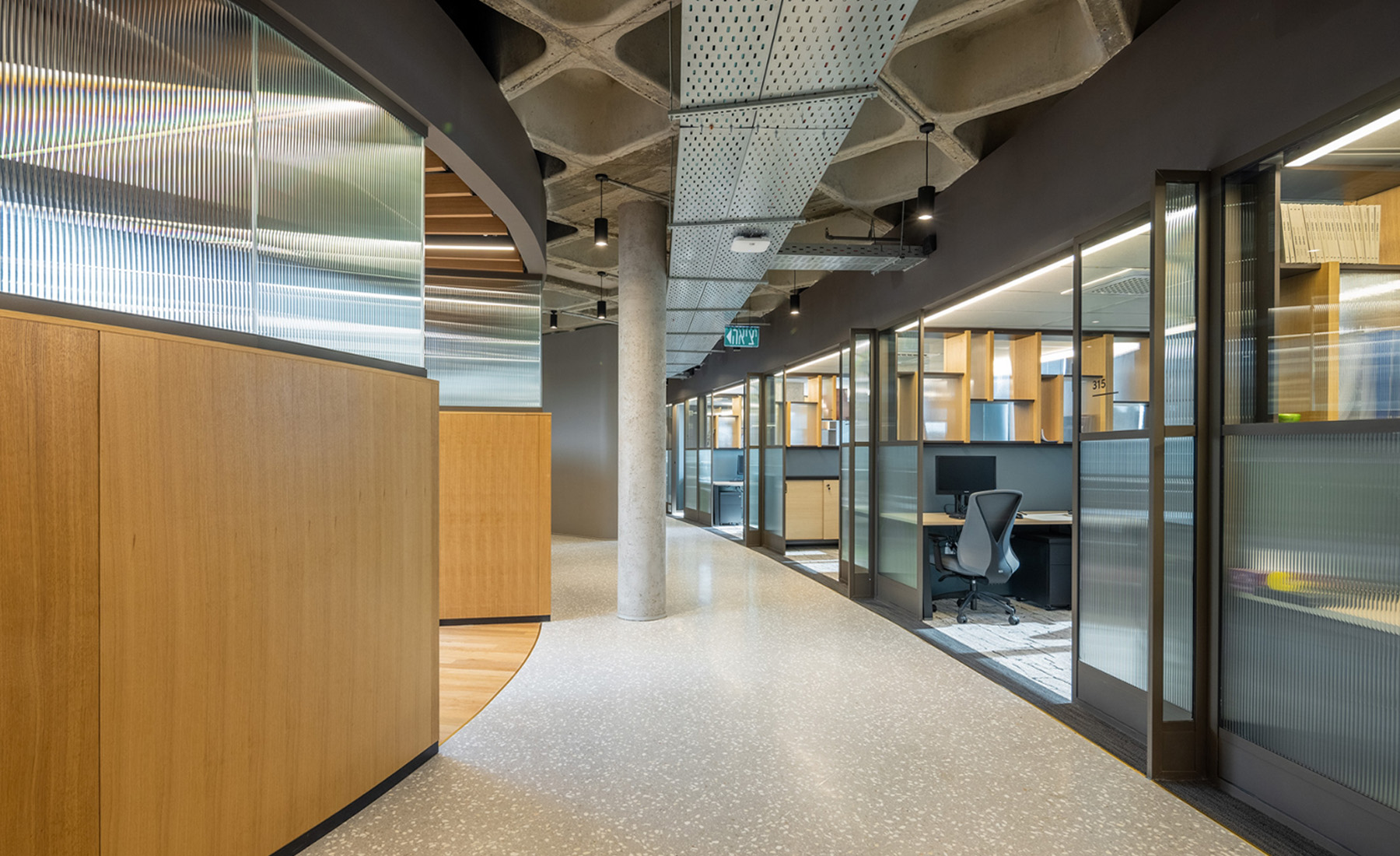
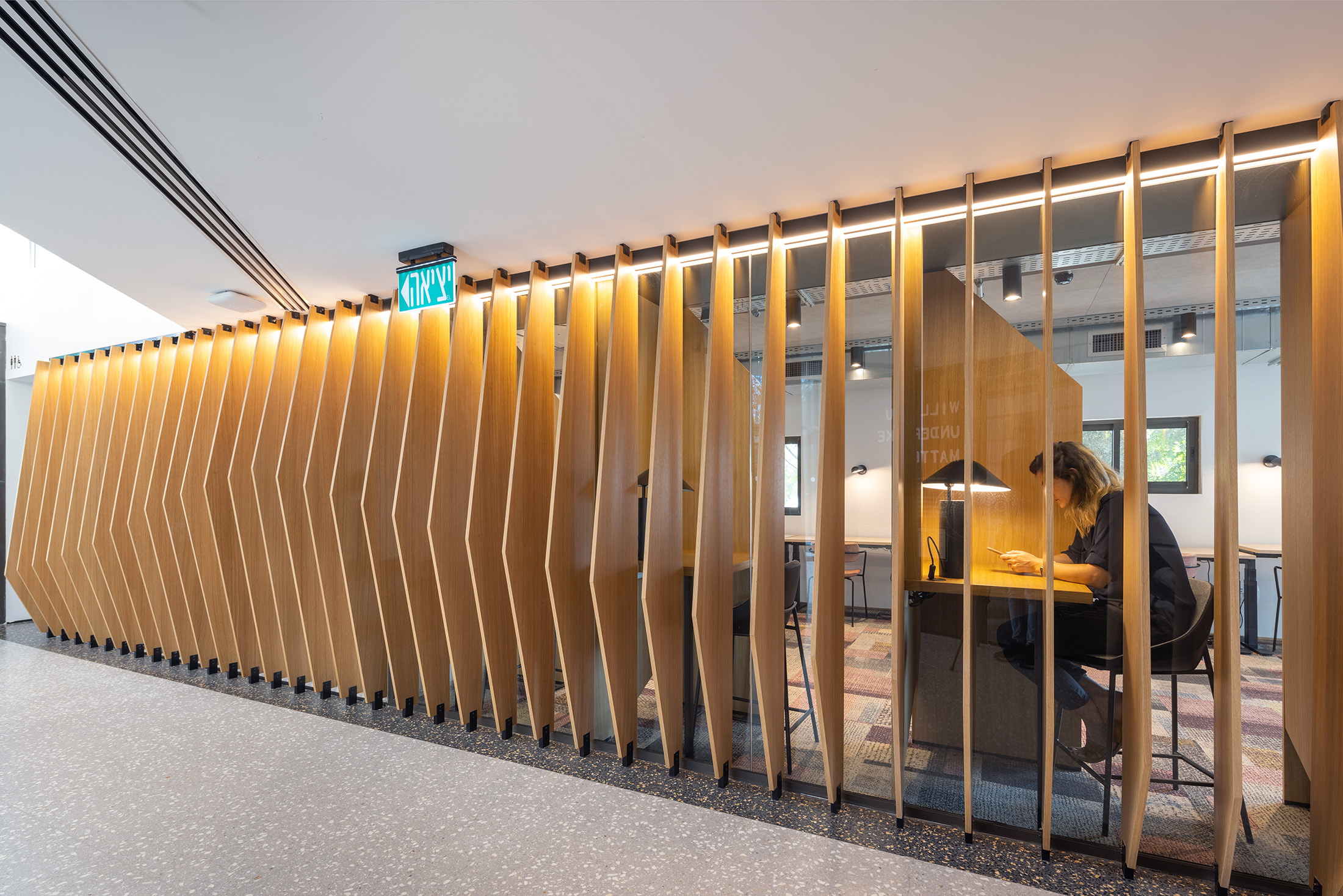
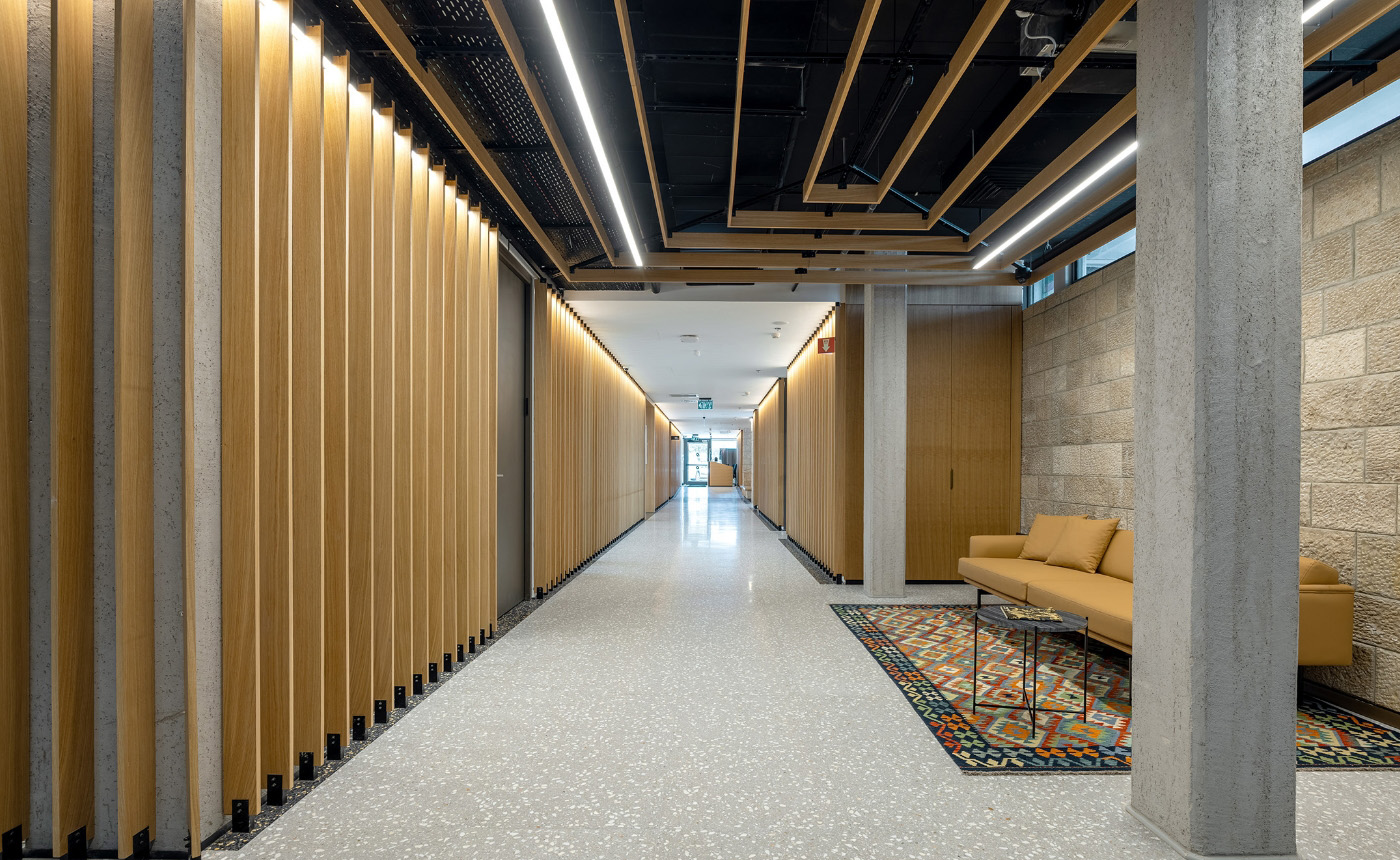
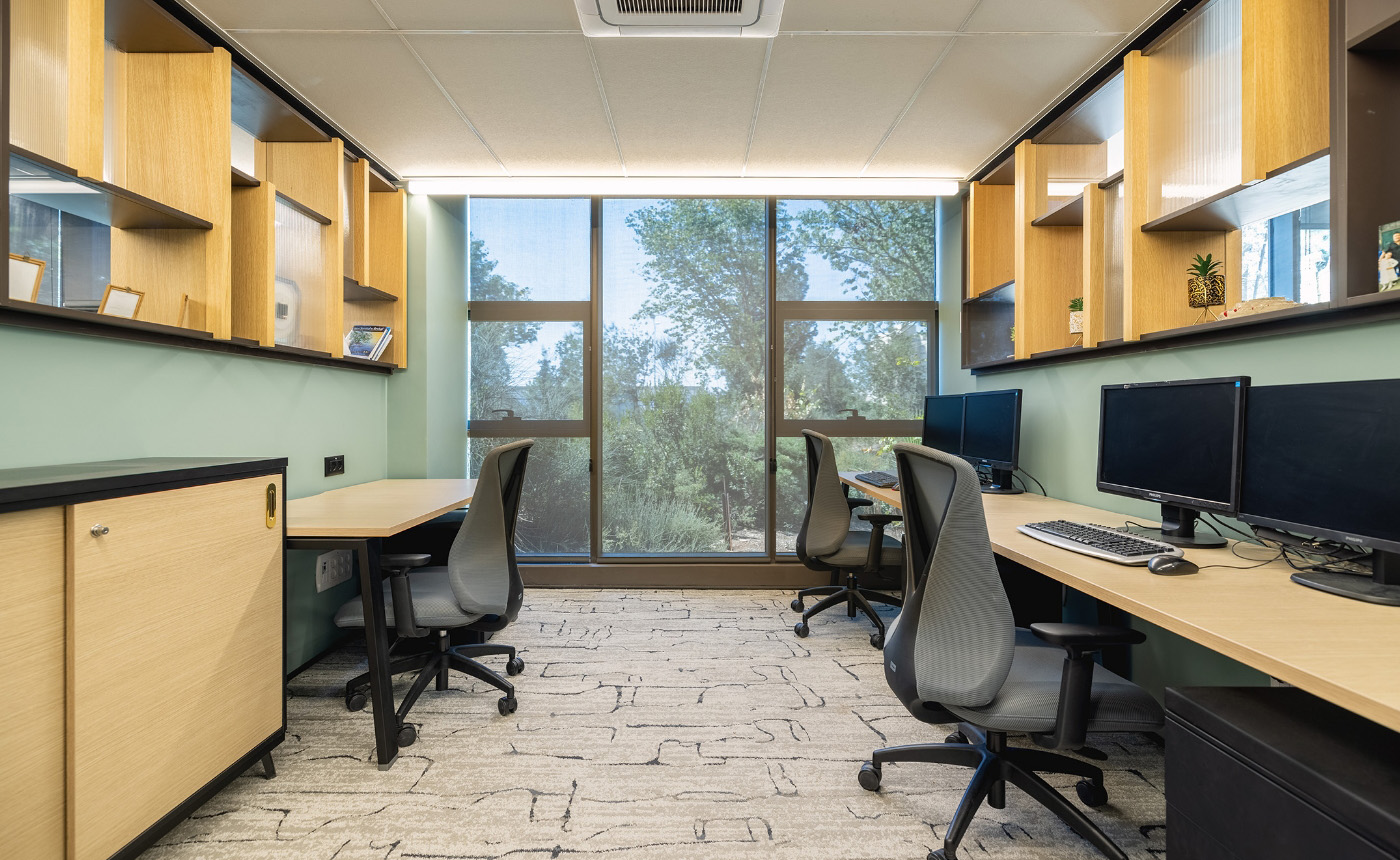
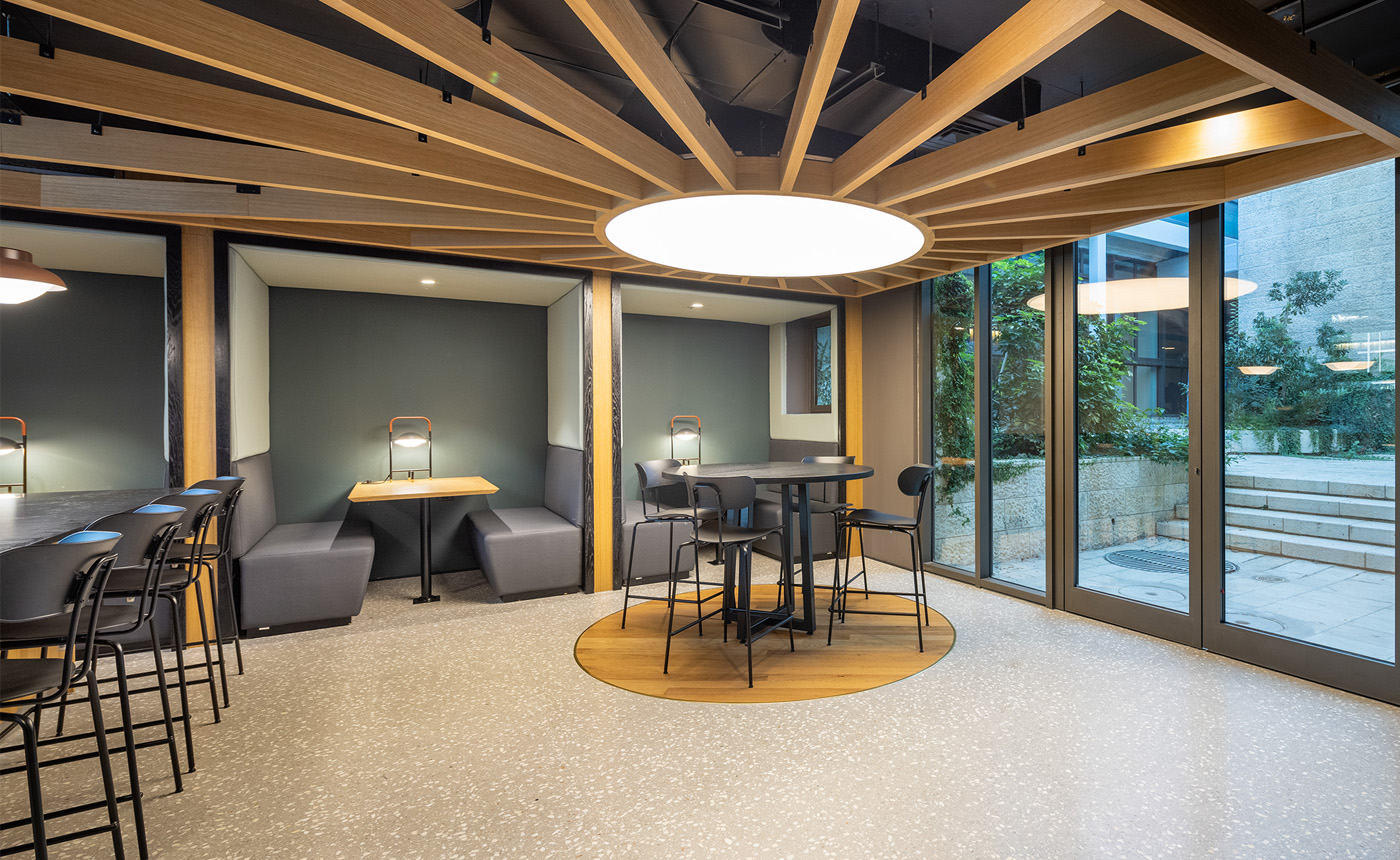
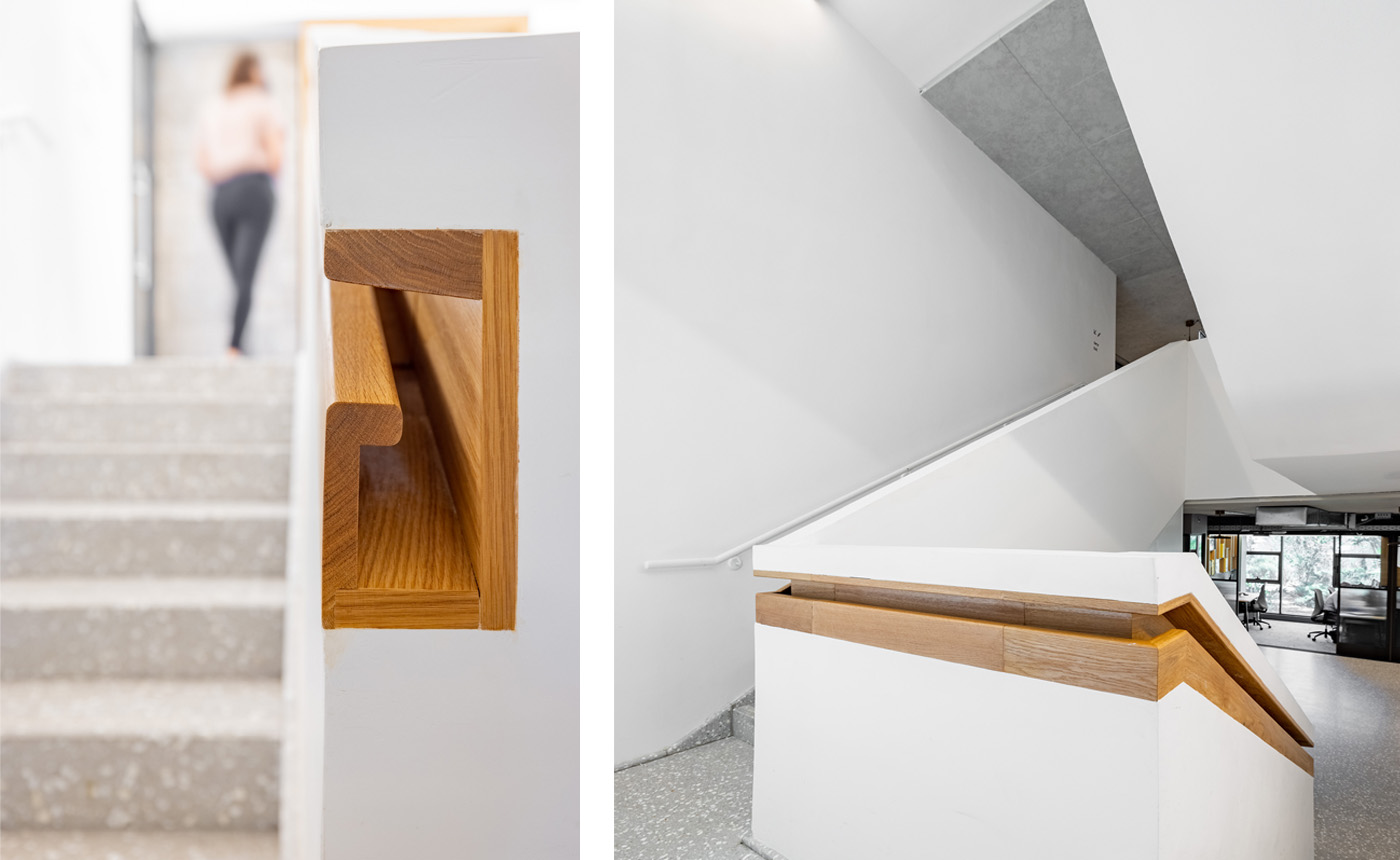
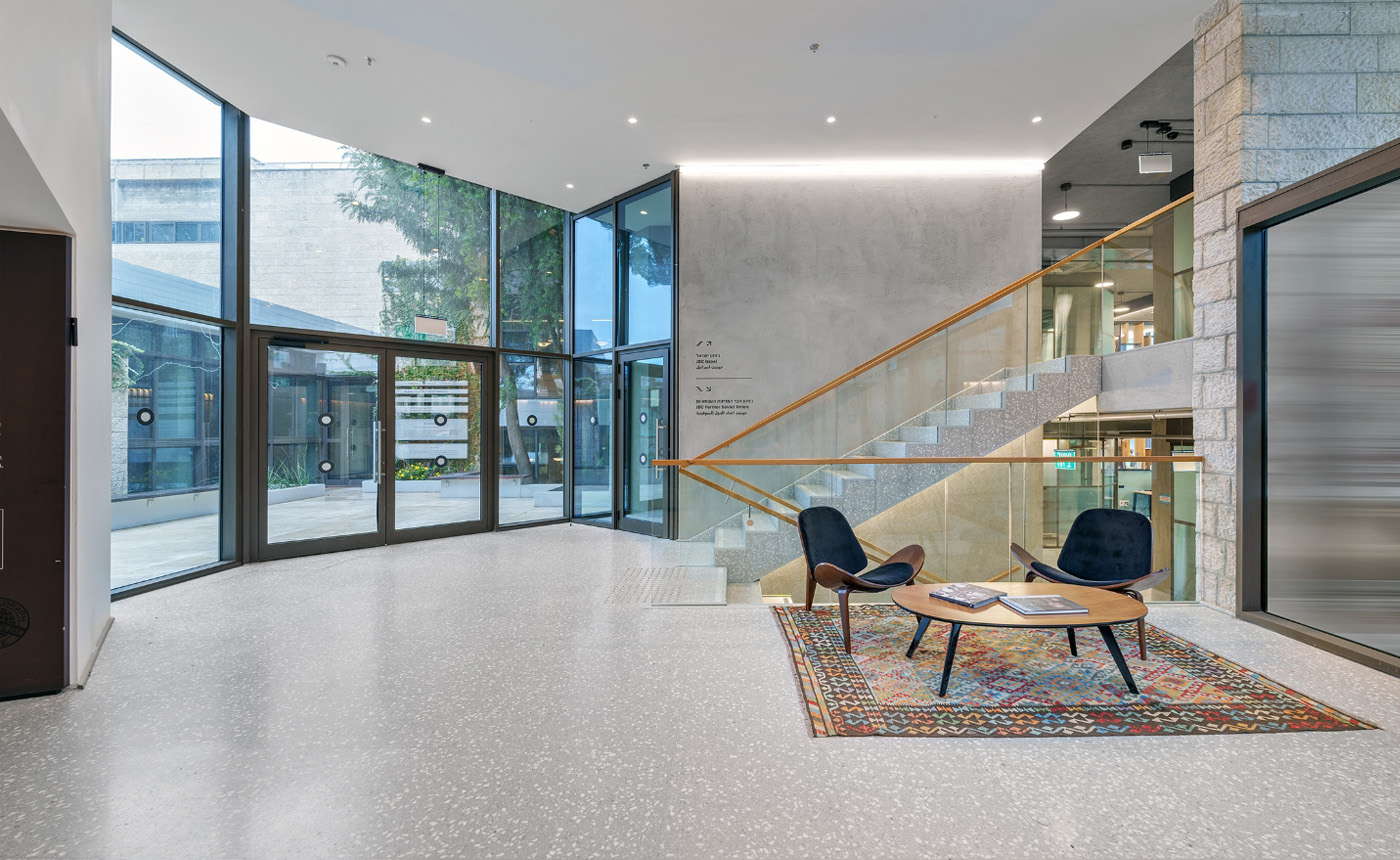
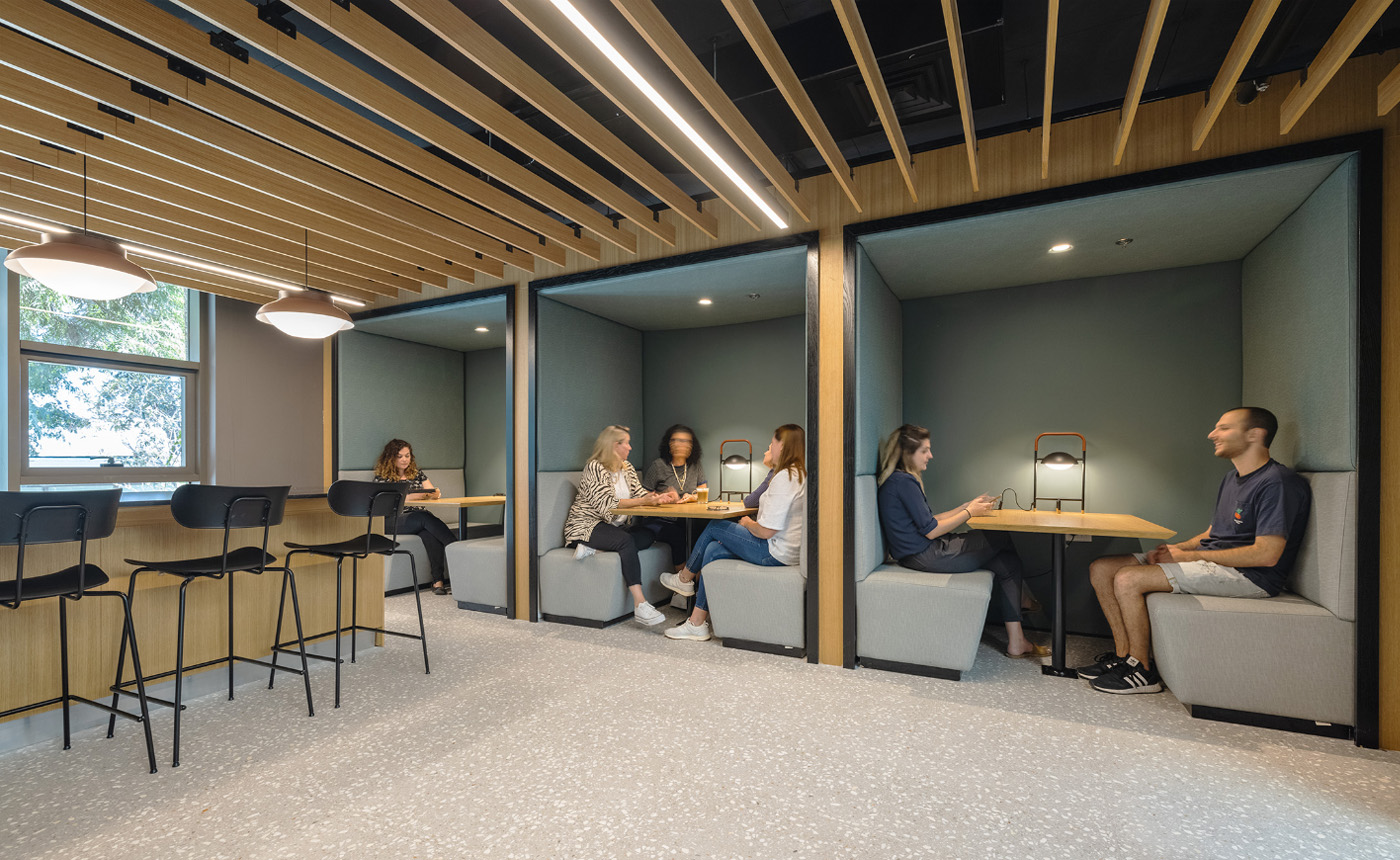
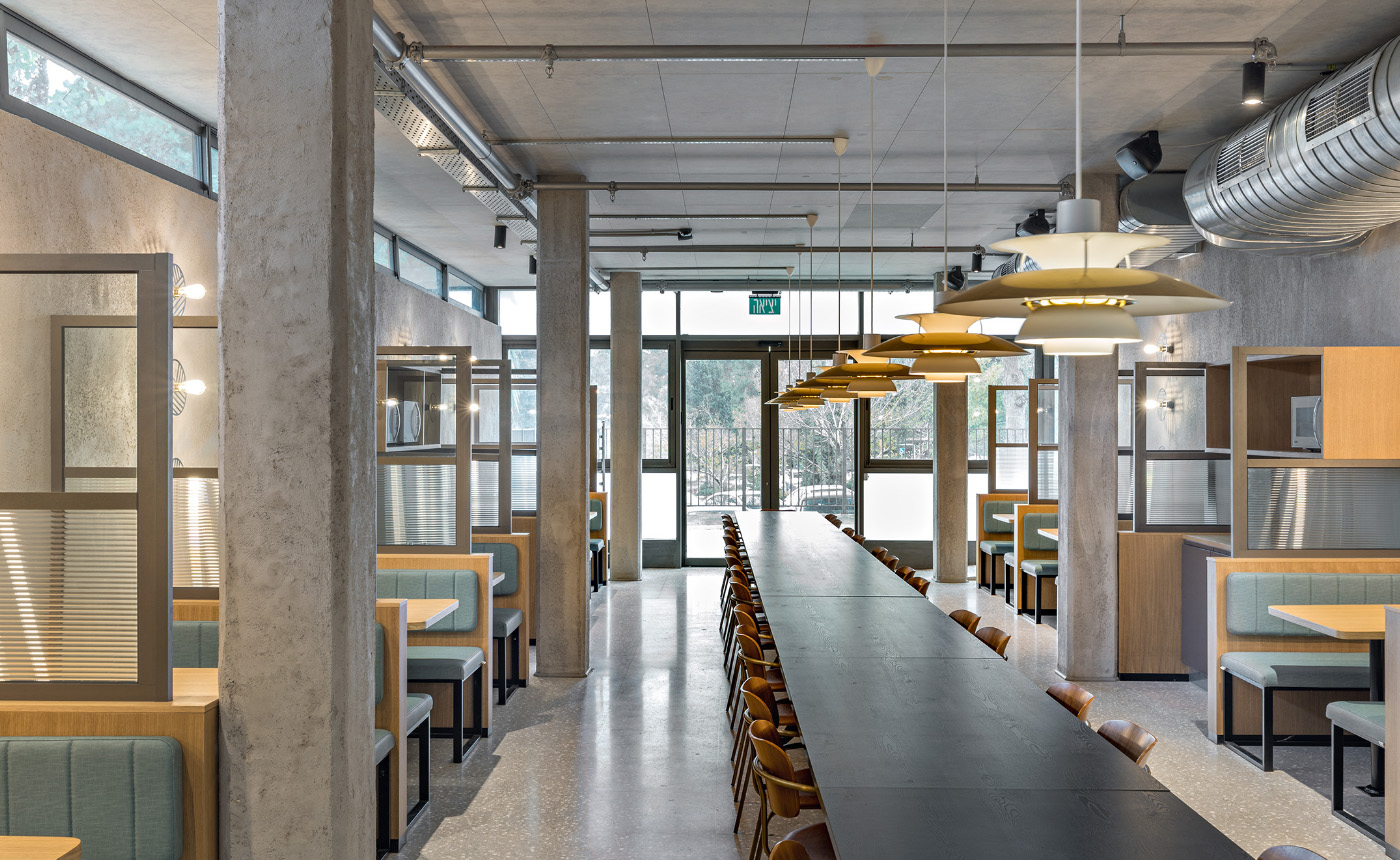
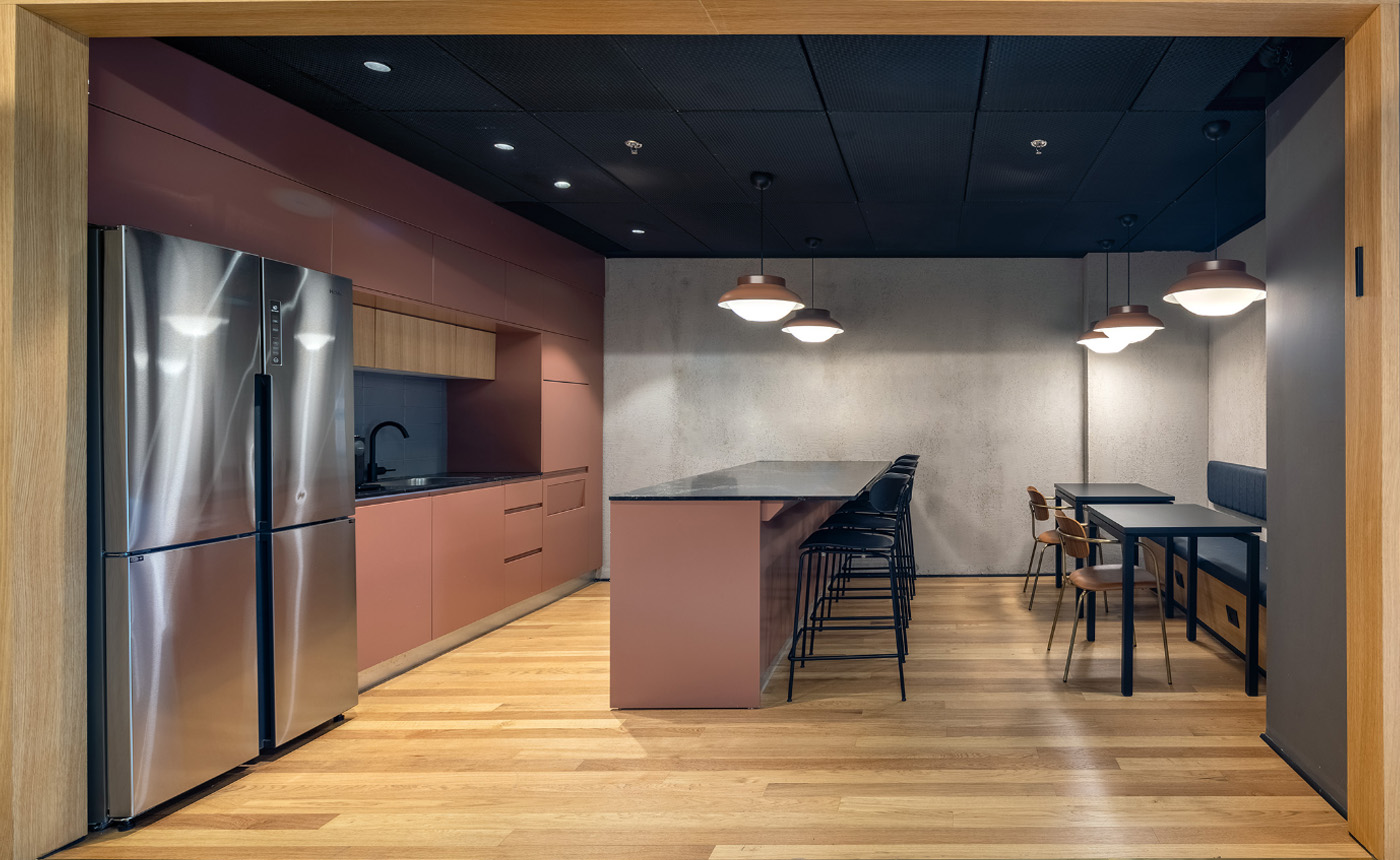
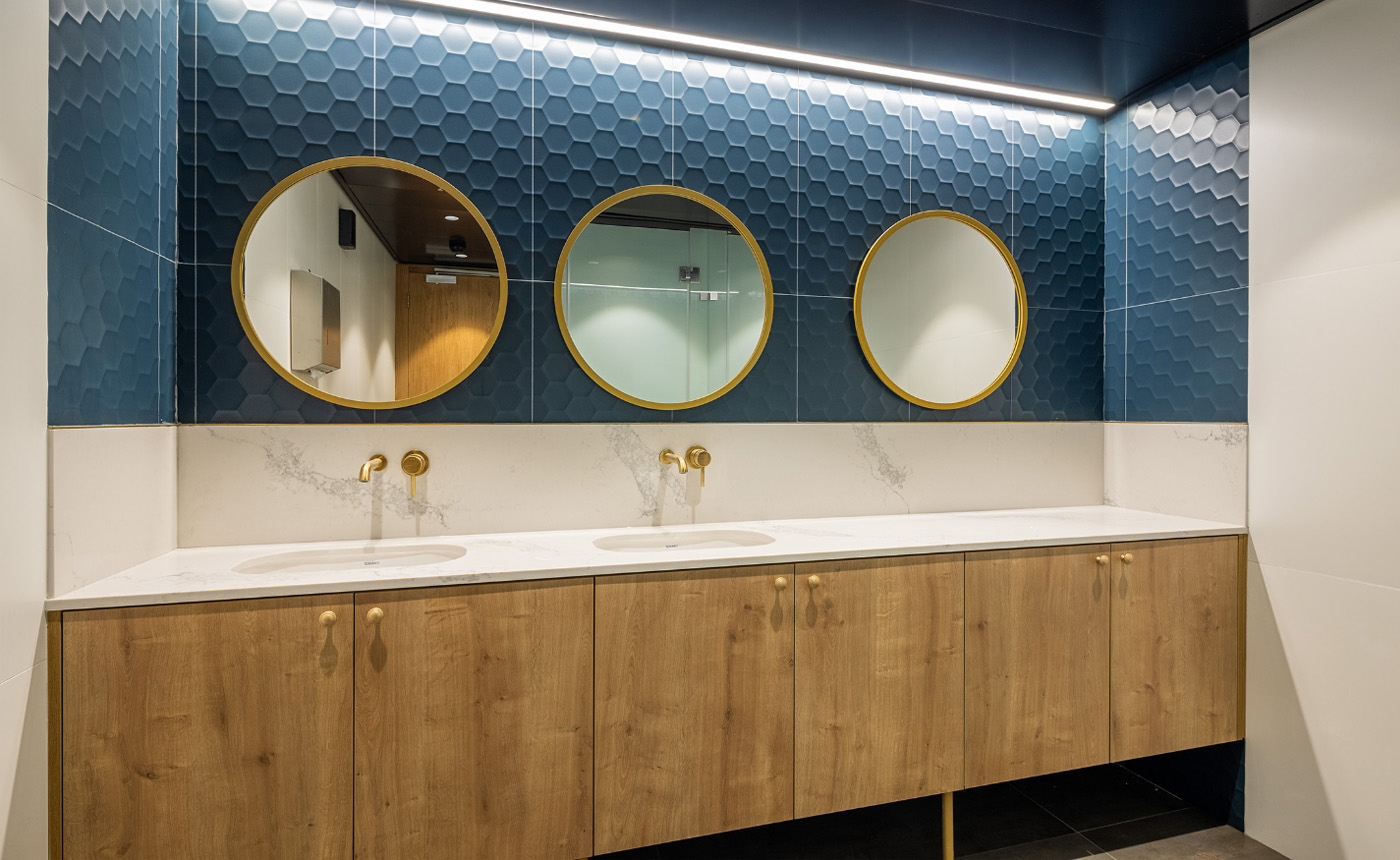
Courtyards with vegetable gardens have been integrated in order to bring natural light
Courtyards with vegetable gardens have been integrated in order to bring natural light and nature inside the building and contribute to the peaceful atmosphere in the heart of the capital. The design attempts to negotiate a balance between sensitive preservation of the existing structure and innovate urban renewal. This can be seen in the choice of natural finishing materials and intricate interior detailing. The design attempts to negotiate a balance between sensitive preservation of the existing structure and innovate urban renewal. This can be seen in the choice of natural finishing materials and intricate interior detailing.
